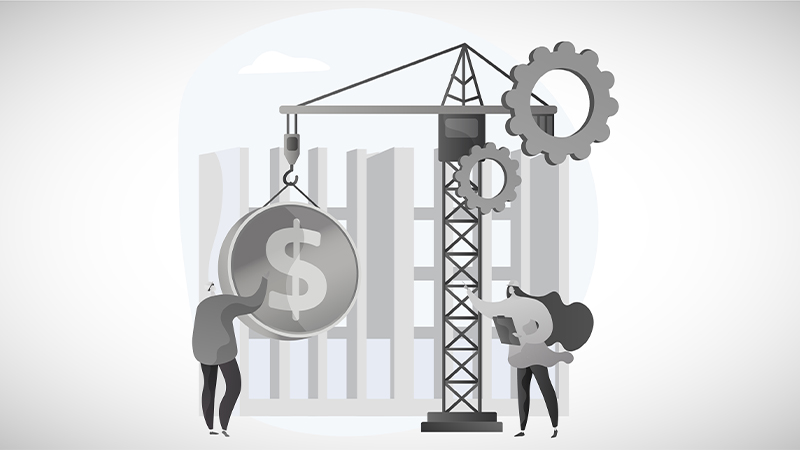
Construction Cost Benchmarking amid Price Volatility


The construction industry has experienced numerous uncertainties because of the outbreak of COVID-19 and the restrictions imposed worldwide, which severely impacted the prices of construction materials and the supply of skilled and unskilled labor. This increased the overall construction cost. Project owners or contractors perform cost benchmarking to ensure that the project is completed within the budget. This article discusses the key factors involved during construction cost benchmarking.
1. Introduction
Construction cost benchmarking is achieved by considering various parameters: General Conditions, Design Proposal, Design Builder’s Fee, Overhead, Profit, Procurement Markup, Contingency Allowance, Retainage Application, Change Order Markup for General Contractor and Sub Contractor (OH&P), and Sub Contractor Markup. These parameters impact a certain percentage of the total value of the construction project to determine the benchmarking.
General conditions: The general conditions are a part of the contractor’s scope, which includes site management, project management, material handling, and garbage removal. It also includes infrastructure and proper resource planning to complete the project effectively. The main objective of general conditions is to complete the project within the timeline and budget.
Design proposal: The design proposal comprises a drawing with the technical description of a construction project and includes compensation for the overall project value. This is a pre-construction expenditure for the project.
Design builder’s fee: The compensation paid to the contractor who constructs the entire building as per the design and includes civil and structural works in the project.
Overhead: The overhead is an expense incurred on the project and covers administrative expenses, rent, and other office expenses. Overhead is an essential component in the construction cost structure.
Profit: Profit is the amount remaining in the project value after settling the subcontractor's bills and overhead costs. The profit percentage is fixed by the contractor based on the size of the project. The pandemic situation considerably impacted the contractor’s profit to retain the project within them.
Procurement markup: The markup maintained for the procurement of construction materials and other fitouts for a construction project is the procurement markup. Usually, this markup is considered for material purchase, transportation, and storerooms.
Contingency allowance: The contingency allowance is reserved to cover unexpected expenses arising from unforeseen risk factors during a construction project. It is akin to a backup amount that can be used to cover uncertainties. Owner contingency and contractor contingency are the two types of contingency allowance.
Retainage application: A certain percentage of the amount is held by the project owner to retain the contractor until the project is completed. The amount held is minimal, varying between 5 and 10 percent. This is a common practice followed by most project owners.
Change order markup for general contractors: The change order markup is the extra amount spent on any changes made in the pre-designed project for general contractors. The change order is of four major types, owner-initiated, unforeseen complications, building permits or regulatory changes, and design error.
Change order markup for subcontractors: The change order markup is the extra amount spent on any changes made in the pre-designed project for subcontractors.
Subcontractor markup: The subcontractor markup is the ratio of the subcontractor's gross profit to the value of the project.
2. Importance of Construction Cost Benchmarking
Cost benchmarking is an important exercise practiced in most industries and is a critical component of the construction industry. It determines the share of each parameter in the value of the overall construction project. Cost benchmarking enhances the owner’s awareness of the expenses incurred for each parameter and enables informed decision-making.
Cost benchmarking is accomplished by comparing project costs with the industry standards and has a minimum and maximum range for most parameters.
Construction cost benchmarking alerts the project owner about unexpected expenses during the construction period. It considers almost all the important factors and uncertainties, which helps complete the project within the expected budget and timeframe.
|
Parameters |
% of total project cost |
|---|---|
|
General conditions |
6.5 |
|
Design proposal |
6.5 – 15.5 |
|
Design builder’s fee |
3.5 – 8 |
|
Overhead |
15 – 20 |
|
Profit |
10 – 15 |
|
Procurement markup |
15 – 25 |
|
Contingency allowance |
20% of potential risk |
|
Retainage application |
5 – 10 |
|
Change order markup for general contractors (OH&P) |
10 – 20 |
|
Change order markup for subcontractors (OH&P) |
< 5 |
|
Subcontractor markup |
2.5 – 5.3 |
3. Conclusion and Key Takeaways
-
Construction cost benchmarking helps every project owner maintain their project expenses within the budget as it covers all the important factors of a construction project.
-
This benchmarking improves the efficiency of cost spent on procurement, as the Russia–Ukraine conflict has increased the price volatility of construction materials.
-
Cost benchmarking increases the negotiating capacity of the project owner as it enhances the knowledge of the industry standard of expenses for various parameters.
-
The project will not be delayed because of financial constraints as the benchmarking covers contingencies and uncertainties.
Related Insights:
View All
Get more stories like this
Subscirbe for more news,updates and insights from Beroe






